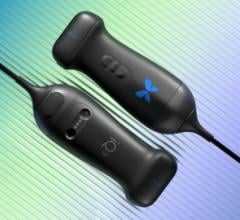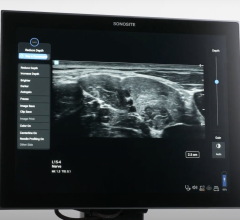The American Society of Echocardiography (ASE) Annual Scientific Sessions is the premier echocardiographic professional conference. The ASE is an organization of professionals dedicated and committed to "excellence in cardiovascular ultrasound and its application to patient care through education, advocacy, innovation and service to the public." The ASE continues to be the largest international organization for cardiac imaging.
In meeting with ultrasound vendors and attending presentations on current and new techniques and applications, four major trends and updates stood out.
1. Research Validates Automated Echocardiography Decision Systems: In a study released at the ASE meeting this year, a research team from New York announced advances in automated echocardiography decision systems that helped clinicians more accurately assess complex heart disease. This study validates framework to increase accurate interpretation of echo images by new sonographers. Specifically, the team developed a system that takes information from ultrasound images, learns about the structure and function of the heart and automatically differentiates enlarged hearts in patients with hypertrophic cardiomyopathy from normal variations of enlarged hearts in athletes. The team says that having the equipment learn algorithms will provide assistance with interpretation of echo images and will help standardize interpretations for new echo users.
2. Growing Focus on Contrast Echocardiography: This was a hot topic at the meeting and the focus of a number of presentations. There are many reasons for the popularity of contrast imaging, but key factors include the current state of echo equipment technology (there are only three FDA-approved contrast imaging agents available, which include Definity, Optison and Sonovue) and the aging population. One presenter asked how many in the very large audience used contrast daily in their labs and how many had never used contrast. An estimated 20-30 percent of people raised their hands who used contrast daily as compared to a small handful who do not use contrast. Although this is not official, it does speak to the growing acceptance and use of contrast echocardiography.
3. Echo or Point-of-Care Imaging in ERs: The use of focused echo or point-of-care imaging in the emergency department (ER) is strong and growing. Physicians at the meeting related multiple instances in which immediate
cardiac ultrasound was extremely beneficial. ER physicians realize the necessity of using echo in the department on a daily basis and the importance of the rapidly obtained critical information echo provides.
4. Stress echo procedures: It is interesting that the stress echo procedure was the focus of several sessions. This diagnostic procedure has been around for many years, but due to equipment improvement, such as better image quality and faster operation time, the procedure has improved in quality and diagnostic significance. The aging population also is a big factor in this increased use, and studies show the use of stress echo has grown considerably in recent years. Stress echo with contrast increases sensitivity, and this segment is an expanding market, as well.. There were sessions about the fundamentals of the stress echo procedure for coronary heart disease, the standard use, but also with structural heart disease. Sessions addressed the importance of and when and how to use pharmacological stress echo, due to the nature of the valvular involvement in patients with structural heart disease. Sessions discussed expansion of use of stress echo with contrast and strain imaging, which increases the sensitivity of the test. Greater application and use of stress echo is standard of care with the technological advancements in echo equipment, including improved image quality and faster, more automated operation, which result in enhanced productivity.
Editor's note: Jon Brubaker, RCVT, MBA, is a clinical analyst for MD Buyline, which is a leading provider of evidence-based clinical and financial insight and information to hospitals. For more information, www.mdbuyline.com.


 April 08, 2024
April 08, 2024 








